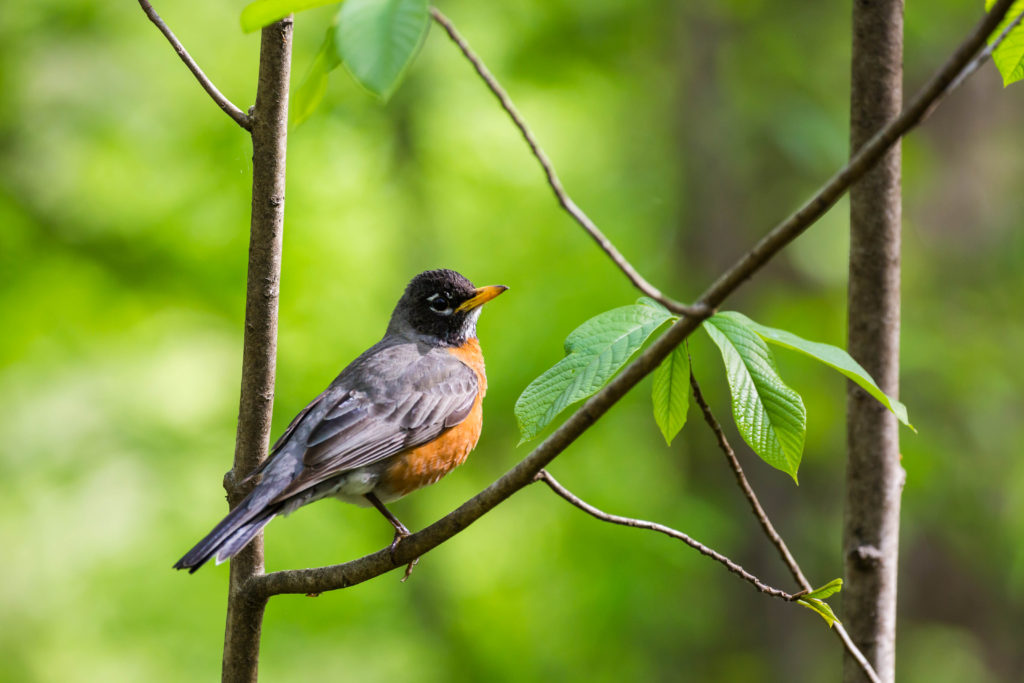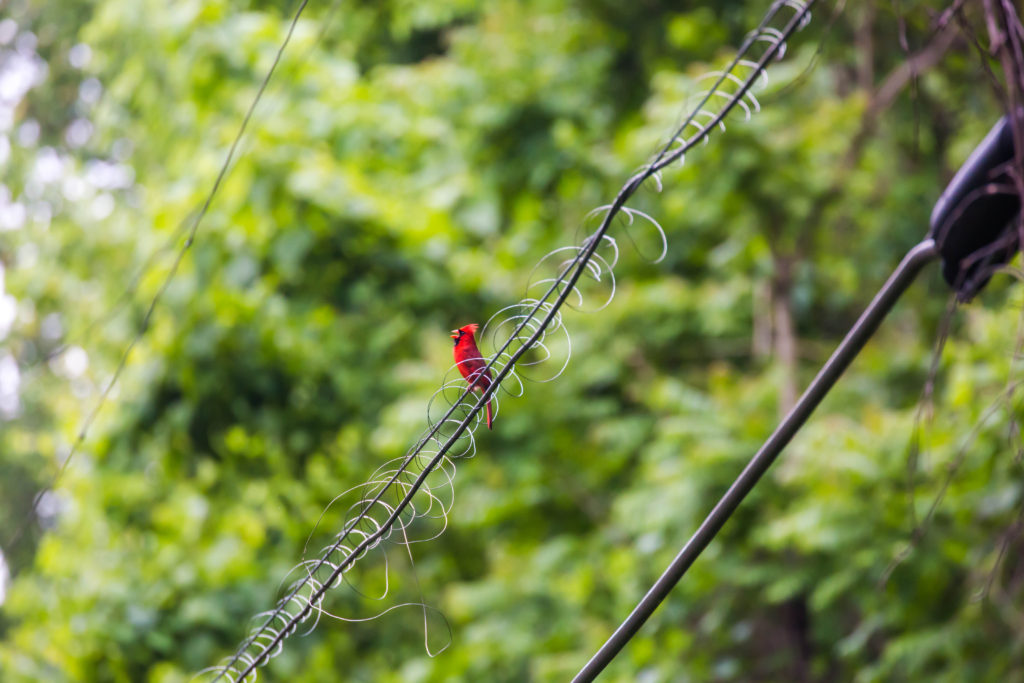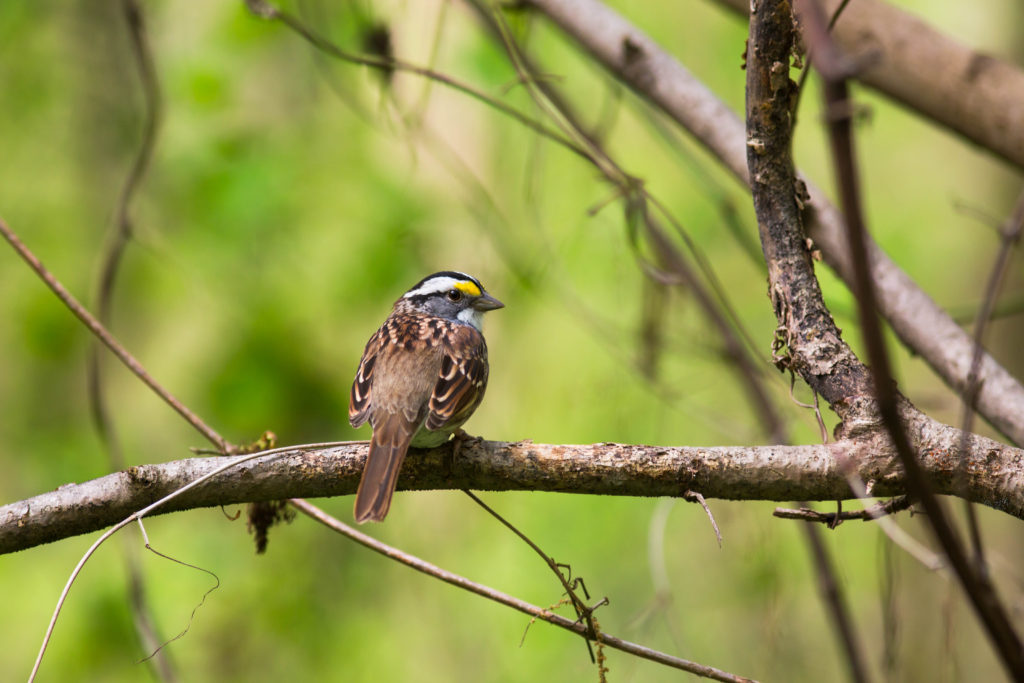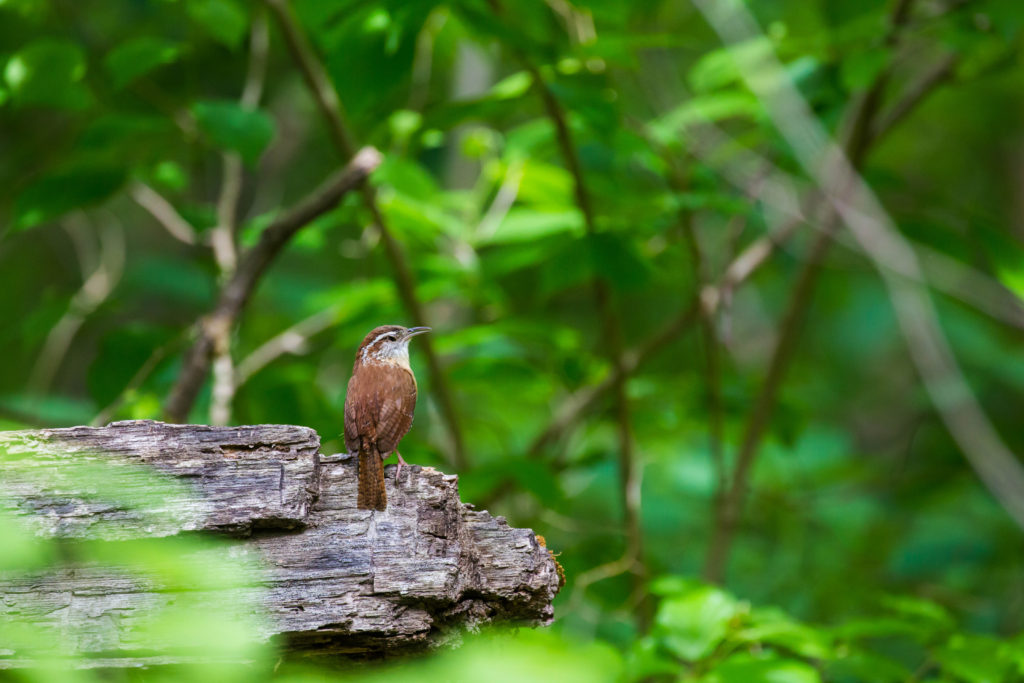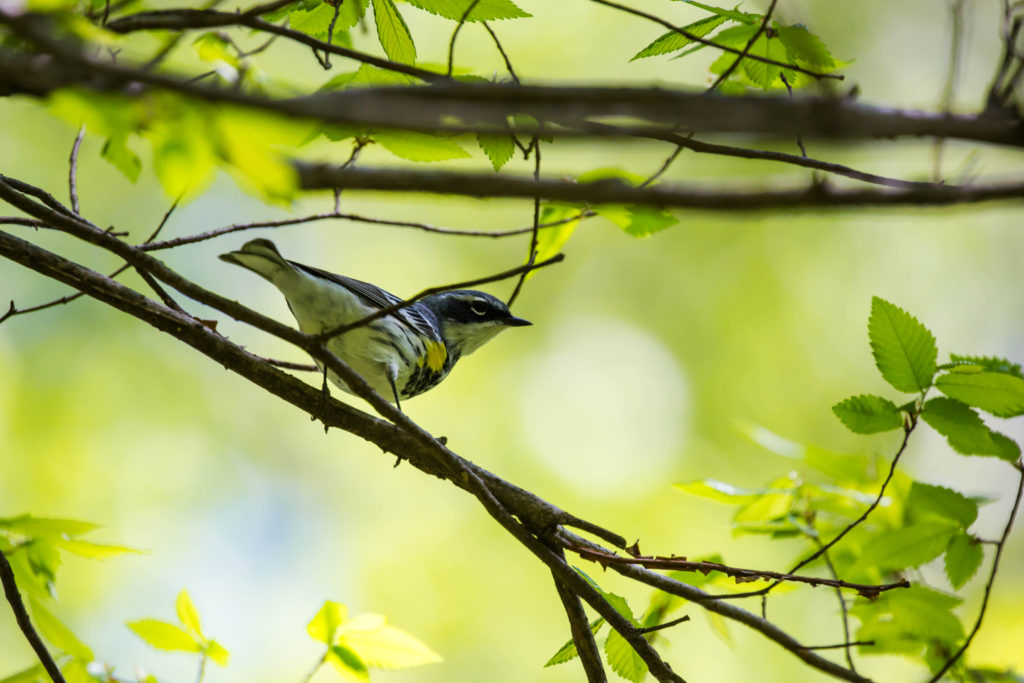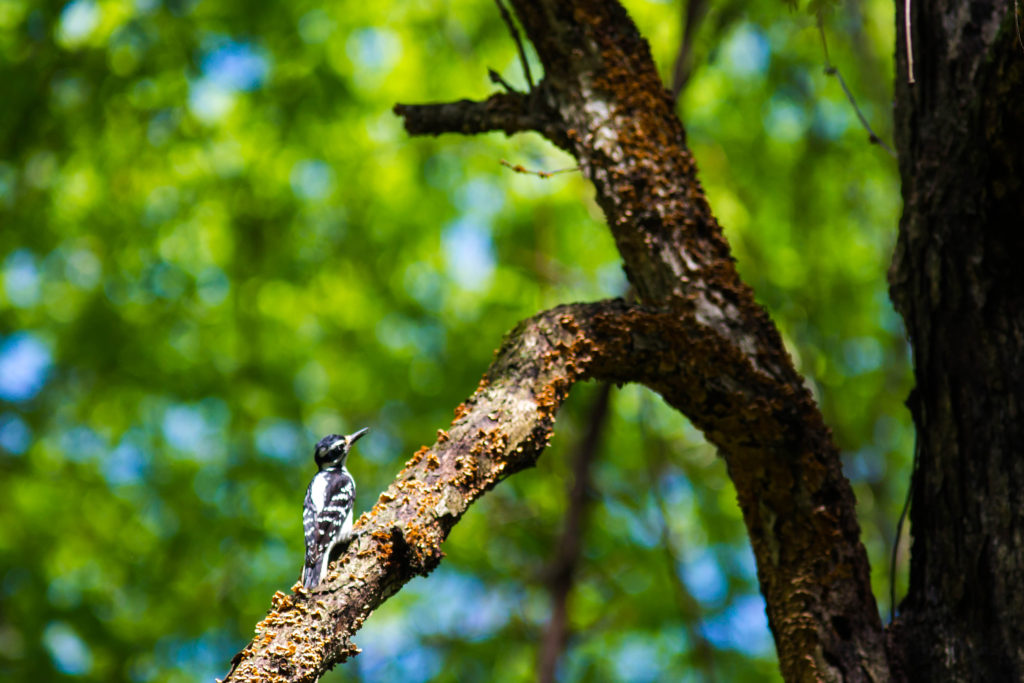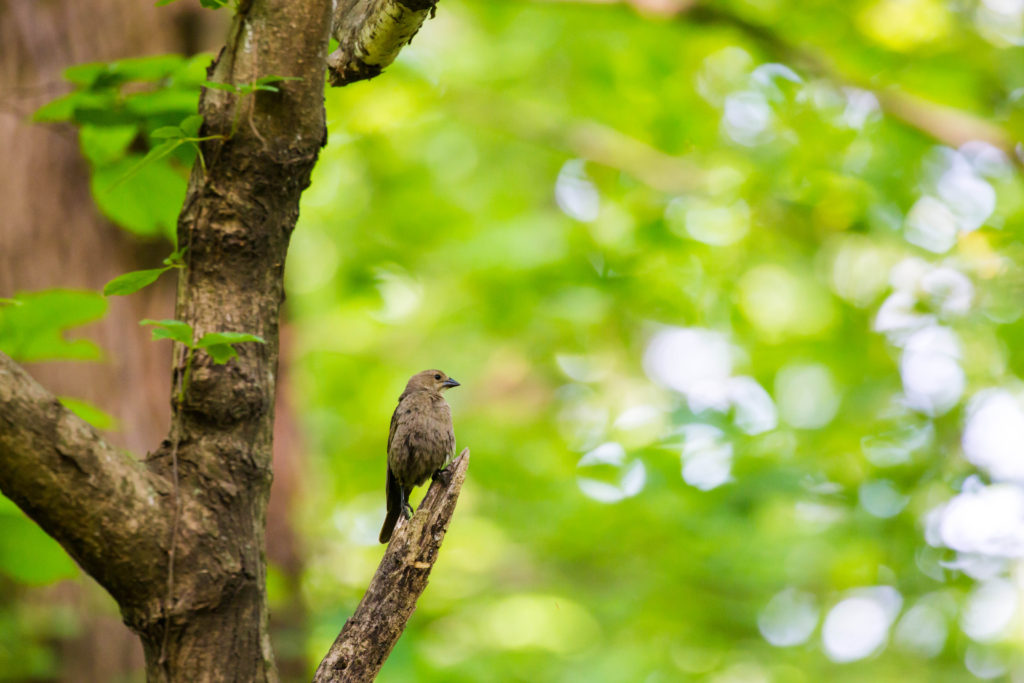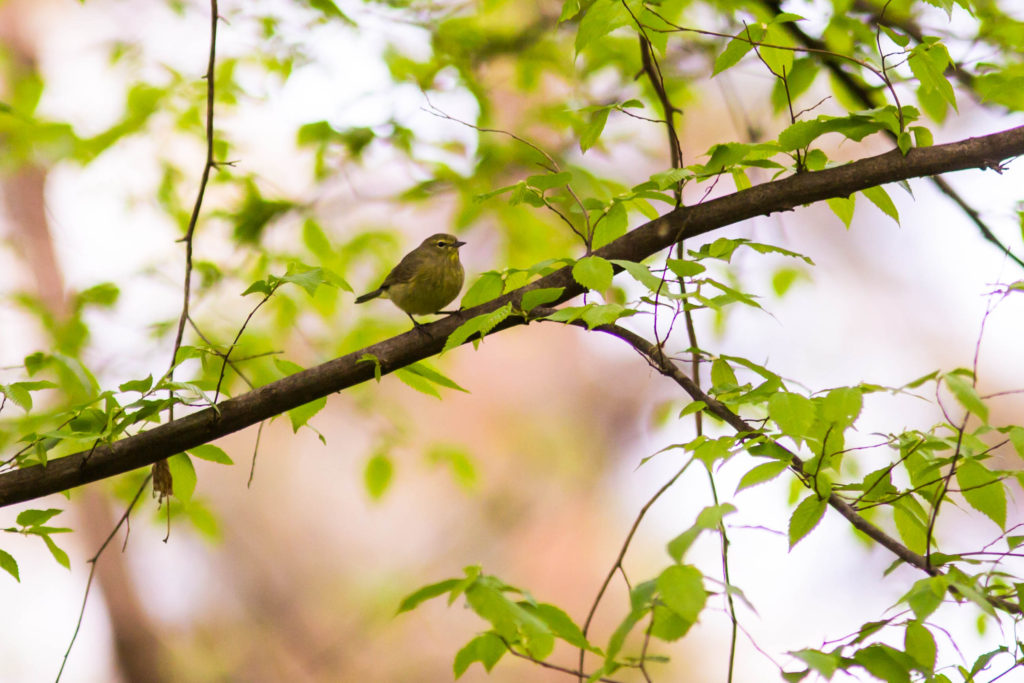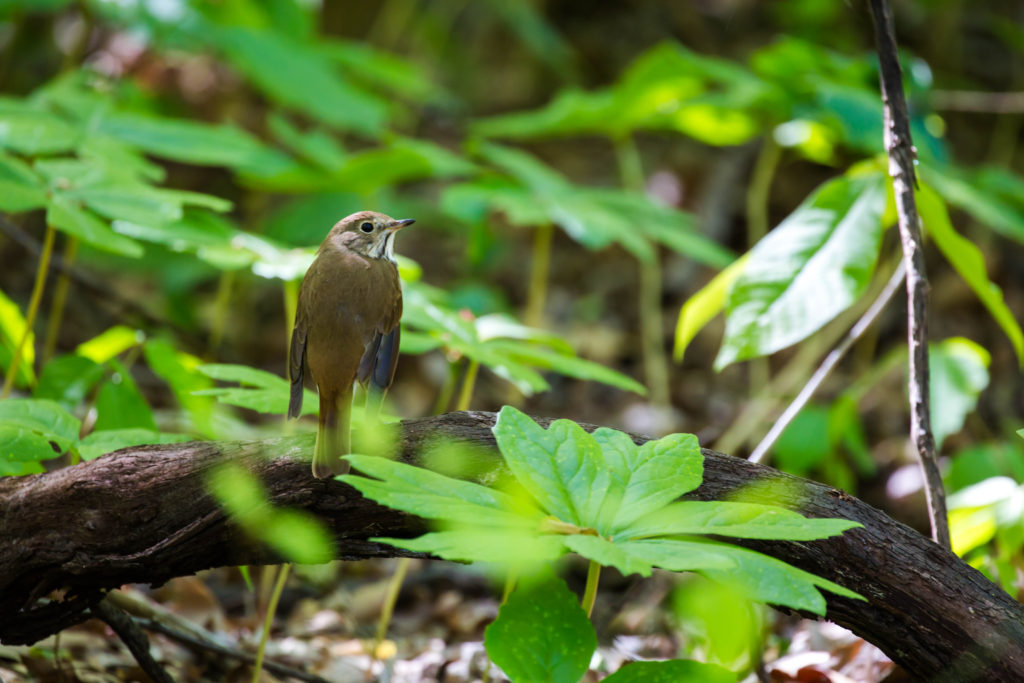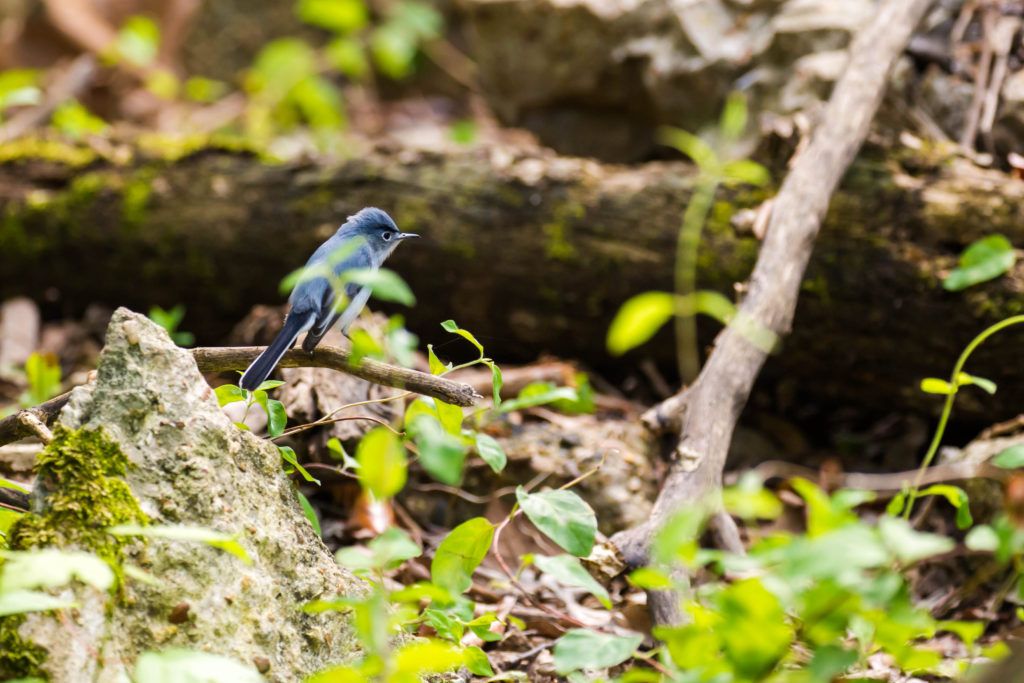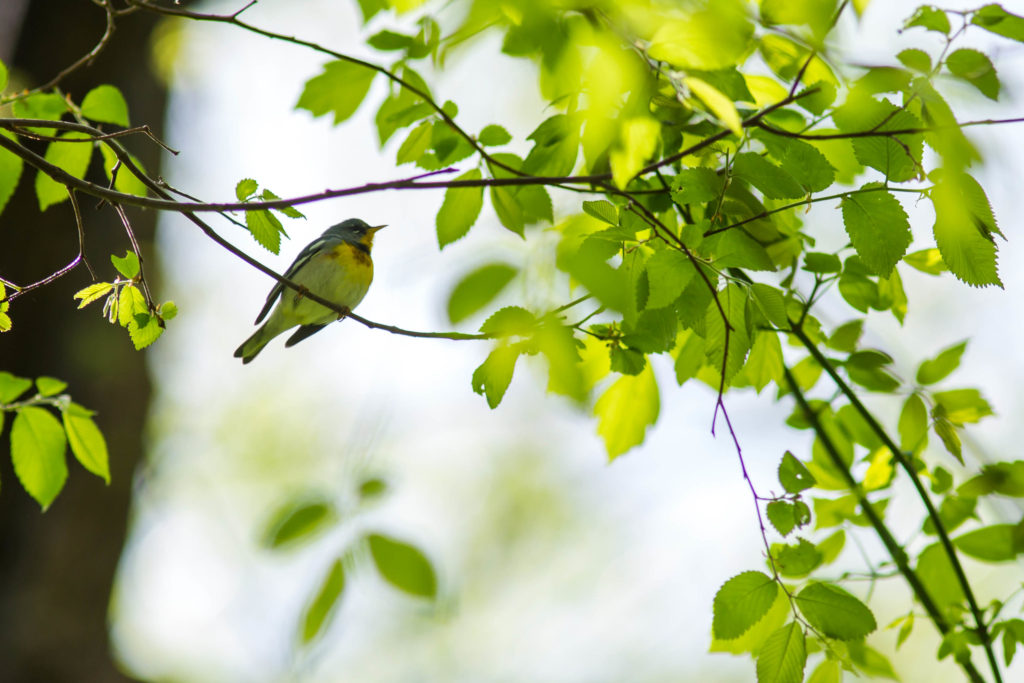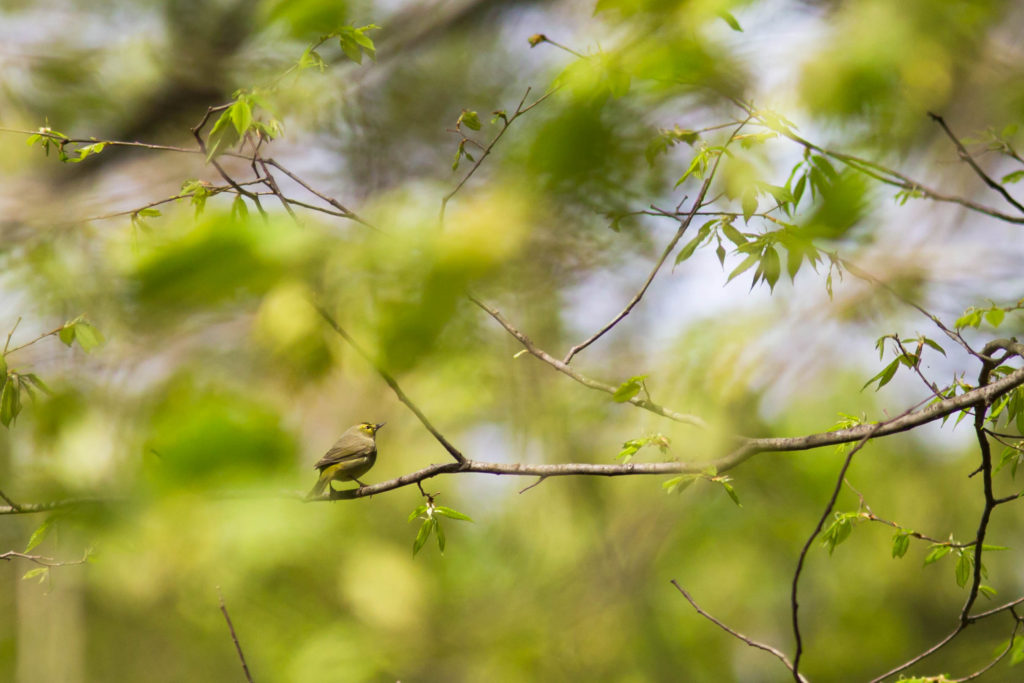Bucks for Birds #1: A Fast Start
And we’re off! If you’re just joining us, we at Overton Park Conservancy are using the month of April to highlight two important components of the Old Forest: the birds that pass through during spring migration, and the invasive plant species that we’re working to eradicate. Because birds can be poisoned by invasive plants (and because they’re very good at spreading invasive seeds far and wide), we decided to connect those dots through a program called Bucks for Birds.
For every bird species we see in the Old Forest in April–the prime month for birds to pass through our area on the way north to their breeding grounds–we’re asking you to pledge an amount of your choice. At the end of the month, we’ll tally up the total and collect your payment, which will go toward removing invasive nandina and mahonia shrubs. So if you pledge $1 per bird and we see 52 species, you’ll contribute $52 toward the health of the forest.
What are you waiting for? Go pledge now!
Before we get to our first set of birds, we want to invite you to attend this Saturday’s Old Forest Science Fair. We’ll be at the Tylur French arched gateway between Rainbow Lake Playground and Overton Bark from 10:00AM – 1:00PM this Saturday, April 8 discussing research projects that are happening in the woods. You’ll get to meet scientists working on copperhead, tree, and mammal studies. And if you come at 10:00, I’d love for you to join me (Melissa) on a walk to look for more birds to add to the tally!
All right, down to business. I’ll be posting photos of all the new species a couple of times a week along with a running list of the total. The posts will get lighter as we go because I’m knocking out a lot of the common birds here at the beginning, such as…
American robin, which was obviously going to be species #1. This one was drying off after yesterday’s midday rain shower.
Northern cardinal, another year-round resident, is perhaps our second most visible bird. And even if you don’t see their red feathers flashing by, the omnipresent “chip” noises and “pyew pyew pyew” calls remind you that they’re always around.
White-throated sparrows, common winter residents here, will be around for a couple more months. There are two color forms of this bird, one with a bold white head stripe, and one with a paler tan stripe. The white-striped birds are more aggressive and better singers, but the tan-striped birds are more attentive to their young. You can read more about these variations here.
Speaking of good singers, the Carolina wren is a tiny bird with a big voice. You can often hear males and females talking to each other: the male sings, and the female responds with a slurred chattering note.
The myrtle warbler we see in our forest all year has just recently regained its distinction as a species. In the 1970s, it was lumped into the yellow-rumped warbler species along with the Audubon’s warbler. But recent genetic studies suggest that these birds are distinct, and now they’ve been split again. Unfortunately, we won’t be adding Audubon’s warbler to our Bucks for Birds tally–they’re only found in the western part of the United States.
One of two woodpecker species in the Old Forest that look almost exactly alike, this hairy woodpecker can be distinguished from the downy woodpecker by its slightly larger size and longer bill. We’ll work on finding a downy for comparison!
The brown-headed cowbird often gets a bad rap because it lays its eggs in the nests of other birds. But it’s simply living out an adaptation it once used to survive on the plains, following bison around and feeding on the insects they carried. As a transient bird, if it remained in a nest to raise its young, it would lose its food source.
Here’s a late visit from an orange-crowned warbler, which winters here but will soon head north. I’ve never seen its namesake crown, which only shows when it’s agitated, but its interrupted white eye-ring is a good clue to its identity.
The hermit thrush will also be on its way north soon, to be replaced by wood thrushes, Swainson’s thrushes, and veeries. I’m particularly fond of these because they often perch beautifully for photos.
Now the fun stuff: the migrants have started to arrive! One of the earliest indicators that spring is here is an appearance by a blue-gray gnatcatcher. These tiny birds buzz and screech as they flit from tree to tree. I find them easy to spot (there are often several in one place) but difficult to photograph (they won’t stop moving!). This is not one of my better efforts, but the others I saw yesterday were all in the treetops.
Another hard-to-photograph bird is the Northern parula. (I’m actually very happy with this picture!) This is the first spring warbler I’ve seen this year, and right now you can hear them chattering high up in the trees. Like the gnatcatcher, their tone is fairly buzzy, but the parula’s call lasts longer.
And finally we have this mystery bird I saw this morning near the golf course. It had a rusty-red stripe on the top of its head, along with an olive-washed head and tail. My best guess is palm warbler, but I’m waiting on the folks over at iNaturalist to weigh in. I’m not counting it toward the total until someone else confirms it!
The list so far (11 species):
- American robin
- Blue-gray gnatcatcher
- Brown-headed cowbird
- Carolina wren
- Hairy woodpecker
- Hermit thrush
- Myrtle warbler
- Northern cardinal
- Northern parula
- Orange-crowned warbler
- White-throated sparrow
Keep checking back for the latest totals. Oh, and go make that pledge!

